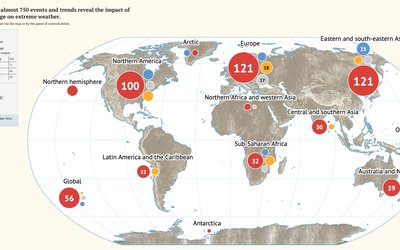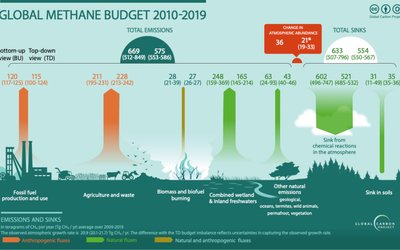‘Detective’ Hansen concludes: we have reached the +1.5 °C threshold of the Paris Climate Agreement
February 13, 2025

In 2024, Earth’s average temperature climbed to more than 1.5 °C above pre-industrial levels. This was the first time since the pre-industrial times of the late 19th century and in fact the first time in the Holocene. This threshold has a special significance: the Paris Climate Agreement stipulates that we should strive to keep warming below 1.5 °C compared to pre-industrial levels.
We have reached the +1.5 °C threshold
Many experts have stressed that this does not mean that from now on global warming has exceeded this critical level. The year 2024 was a special one with the El Niño phenomenon causing extra global warming. According to these experts, global warming will drop below 1.5 °C in the coming years because we will enter a new, cooler phase in the El Niño/La Niña cycle. This cycle leads to an alternation of higher and lower average global temperatures. In a recent paper, the famous climate researcher James Hansen and several colleagues argue that global warming will not drop below 1.5 °C. In their extensive article they conclude that we have already reached the +1.5 °C threshold of the Paris Climate Agreement.
Reduction ship aerosols
They analysed changes in temperature and possible causal factors in the period 2020-2024, when global warming accelerated. In their own words: “like a detective who dusts a doorknob and lifts a fingerprint with clear adhesive tape, we extract fingerprints of the mechanisms that caused the acceleration of global warming”. Their research led them to conclude that the recent acceleration was due to a strong reduction of ship aerosols since 2020, because of new legislation. Less aerosols in the atmosphere means more solar radiation reaches the earth. It’s the opposite effect of volcanic eruptions like the Pinatubo eruption in 1991 that blasted so many aerosols into the atmosphere that global average temperature was lowered by 0.3 °C.
+2 °C threshold by 2045
The current effect of the strong reduction of ship aerosols is an additional global warming of 0.2 °C, and this effect on global warming will increase in the distant future. About 40% of this effect is achieved in 10 years, 60% in 100 years, and 90 percent in 1,000 years. This long timescale of the temperature response is a consequence of the ocean’s great thermal inertia. Over continents, the early response is larger because the response is not held down tightly by the ocean’s great thermal inertia. According to Hansen and his colleagues, this ship aerosols effect will prevent global temperature from falling much below +1.5 °C relative to pre-industrial time. In addition, we will reach the +2 °C threshold of the Paris Climate Agreement by 2045.
At odds with IPCC
The authors stress that their conclusion on the major role of decreasing ship emissions on recent accelerated global warming is at odds with that of the IPCC. The IPCC underestimates the effect of aerosols on global warming, they conclude.
Source: Hansen et al., 2025. Environment: Science and Policy for Sustainable Development 67 (1).








